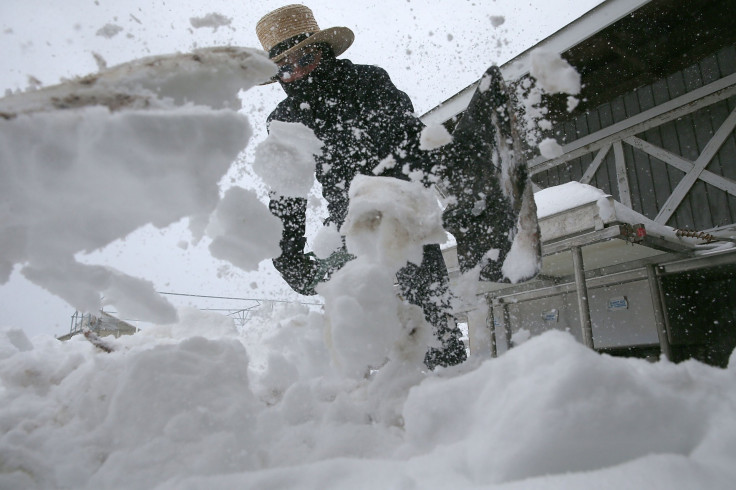Blizzard 2016: What Could The Economic Impact Of The Snowstorm Be?

A severe winter storm system pounded the United States Saturday from Tennessee to Connecticut, leaving much of the Northeast blanketed in snow and some coastal areas with flooded streets and houses. City and state officials have declared states of emergency, called for emergency evacuations and closed roads and public transportation systems, forcing millions of people to hunker down to wait out the storm.
Storms like this weekend’s have been known to cost the U.S. billions, and the weekend timing of the snow could ease the economic impact of the storm. While municipalities have to pay for the snow removal, which could hurt their budgets, the fact that the storm is occurring at a time when most people typically aren't working mitigates the impact on economic output.
The Wall Street Journal pegs economic output in the region at $16 billion daily but because of the storm's timing, it likely won't suffer much.
“Though the storm will disrupt millions of lives, the timing is good from an economic perspective,” Ryan Sweet, an economist with the financial services company Moody’s Analytics told the Journal. “Its greatest impact will likely occur over the weekend, minimizing the amount of lost output.”
More than 9,000 flights canceled this weekend due to #Blizzard2016 https://t.co/mbGH6ldzKx
— Wall Street Journal (@WSJ) January 23, 2016
About 30 inches of snow dropped on parts of the states most affected by the storm, and winds have been recorded along the Atlantic Coast at 85 mph, Weather.com reported. The storm has led to at least a dozen deaths, mass power outages and whole buses of people being stranded on the Pennsylvania Turnpike.
Extremely cold winters the past two years led to the contraction of the U.S. economy at the beginning of 2014 and again at the start of 2015. This week’s storm is one of the first big storm systems to hit the Northeast this winter after unseasonably warm temperatures around the holiday season.
“Unusually high temperatures, particularly in December, likely boosted fourth-quarter GDP [gross domestic product] growth in the order of a few tenths of a percentage point,” Sweet told the Journal.
However, the weather does come with its costs. In 2014 alone, 15 percent of all insured home, auto and business catastrophe loses were caused by severe weather, and cities in areas where snow is common have to budget large amounts to make sure they can cover snow removal, Accuweather.com reported.
New York City, for example, paid more than $130 million to clear snow in its five boroughs in 2014. Massive snowstorms can also bust the budgets of municipalities, especially on weekends when many agencies pay double-time to workers, CNN Money reported.
After a holiday storm in 2010, Danbury, Connecticut, expected to spend more than half its budget for snow removal for the entire winter on the one storm. Other municipalities across the country had to worry about spending more on the snow removal, with some contemplating asking the federal government for money to offset the high cost.
A massive winter storm is raising flood waters in communities up and down the Atlantic Coast: https://t.co/ta8Q85n7CP
— The Associated Press (@AP) January 23, 2016
The flooding experienced this weekend, especially in New Jersey, harkened back to the dark days of Hurricane Sandy, which in 2012 had a severe impact on coastal areas of New York and New Jersey among other places. Stone Harbor and Cape May, New Jersey, broke flooding records set by Sandy Saturday morning, Weather.com reported.
“This is worse than Sandy — I have more water now than then,” Keith Laudeman, owner of the Lobster House in Cape May told the Jersey Tribune. “We did everything we could but the tide came up. I never saw this coming.”
Sandy is thought to have caused about $62 billion in damage, most of which occurred in New York and New Jersey, the Associated Press reported. While officials said they didn’t expect Sandy-like conditions, they were still preparing for the worst.
© Copyright IBTimes 2024. All rights reserved.











